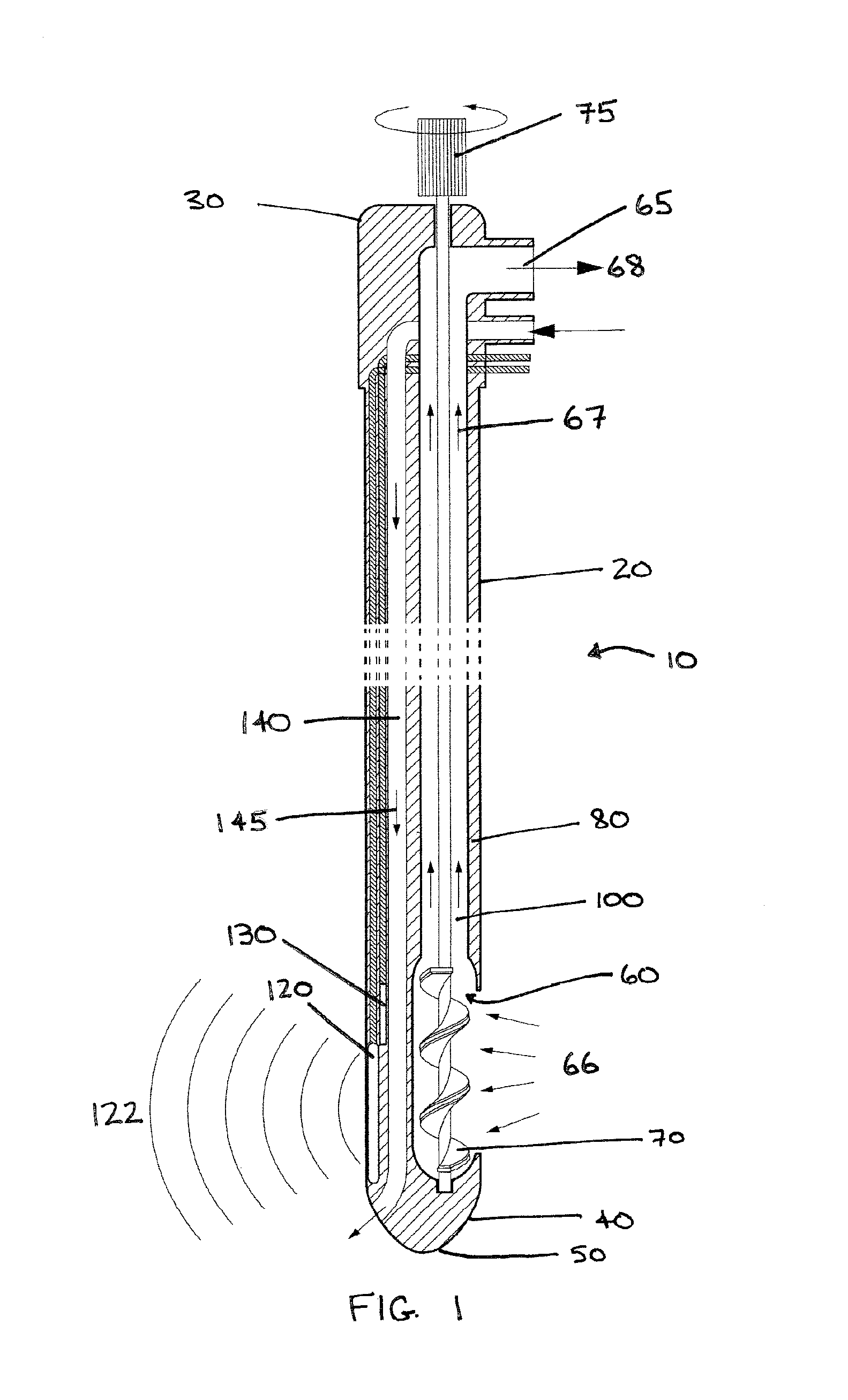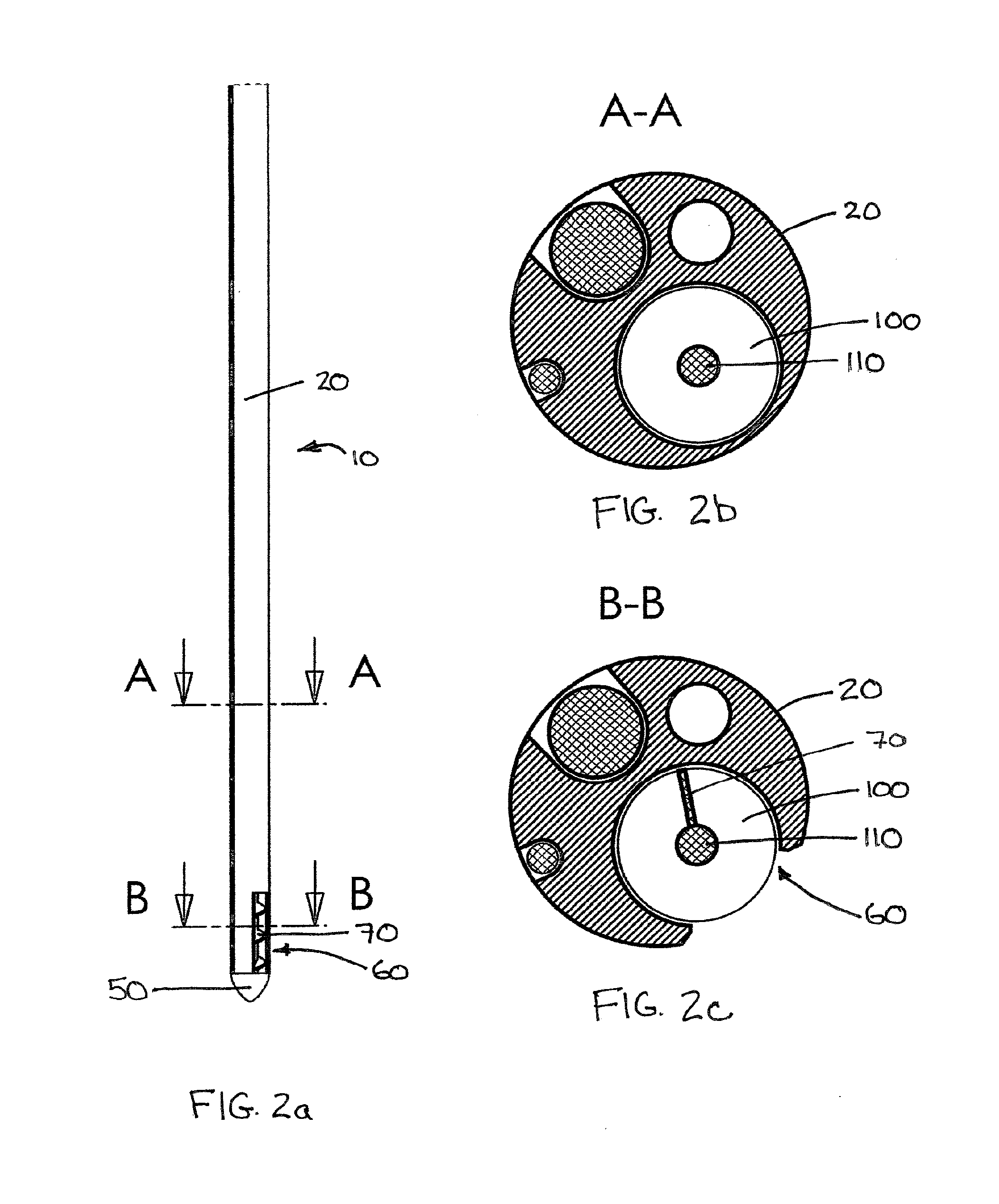Apparatus and method for minimally invasive intracranial hematoma evacuation with real-time assessment of clot reduction
a technology of intracranial hematoma and real-time assessment, applied in the field of minimally invasive surgery, can solve the problems of increased intracranial pressure (icp), elevated icp beyond the normal range can have substantial adverse effects on the health of individuals, paralysis, death, etc., and achieves quick intervention, improved outcomes, and reduced heath care costs
- Summary
- Abstract
- Description
- Claims
- Application Information
AI Technical Summary
Benefits of technology
Problems solved by technology
Method used
Image
Examples
Embodiment Construction
[0020]The present invention provides an improved method and apparatus for the evacuation of intracerebral hematomas. More specifically, an aspect of the present invention is a minimally invasive surgical apparatus within a neuro-navigation system that can provide real-time imaging of the ICH evacuation procedure, including the clot itself. The principal mechanism by which the hematomas are evacuated is an Archimedes screw or auger, which is housed within an apertured lumen and, when placed inside a hematoma and rotated in an appropriate direction, causes the removal of the clotty material. The apparatus also includes ultrasonic imaging capability so that the surgeon can monitor its placement and the evacuation progress in real time. Additionally, an aspect of the invention is that, in a preferred embodiment, the distal portion of the apparatus can house an electromagnetic tracking coil so that the surgeon can use it with a navigation system.
The Probe
[0021]Referring now to FIG. 1, a ...
PUM
 Login to View More
Login to View More Abstract
Description
Claims
Application Information
 Login to View More
Login to View More - R&D
- Intellectual Property
- Life Sciences
- Materials
- Tech Scout
- Unparalleled Data Quality
- Higher Quality Content
- 60% Fewer Hallucinations
Browse by: Latest US Patents, China's latest patents, Technical Efficacy Thesaurus, Application Domain, Technology Topic, Popular Technical Reports.
© 2025 PatSnap. All rights reserved.Legal|Privacy policy|Modern Slavery Act Transparency Statement|Sitemap|About US| Contact US: help@patsnap.com



